Homey Pro vs. Samsung SmartThings
When setting up your smart home you might find yourself comparing Homey Pro and SmartThings. They both offer a unique approach, so the best choice depends on your needs and preferences. Let’s explore the core philosophies, features, and differences, helping you decide which platform suits your home better.
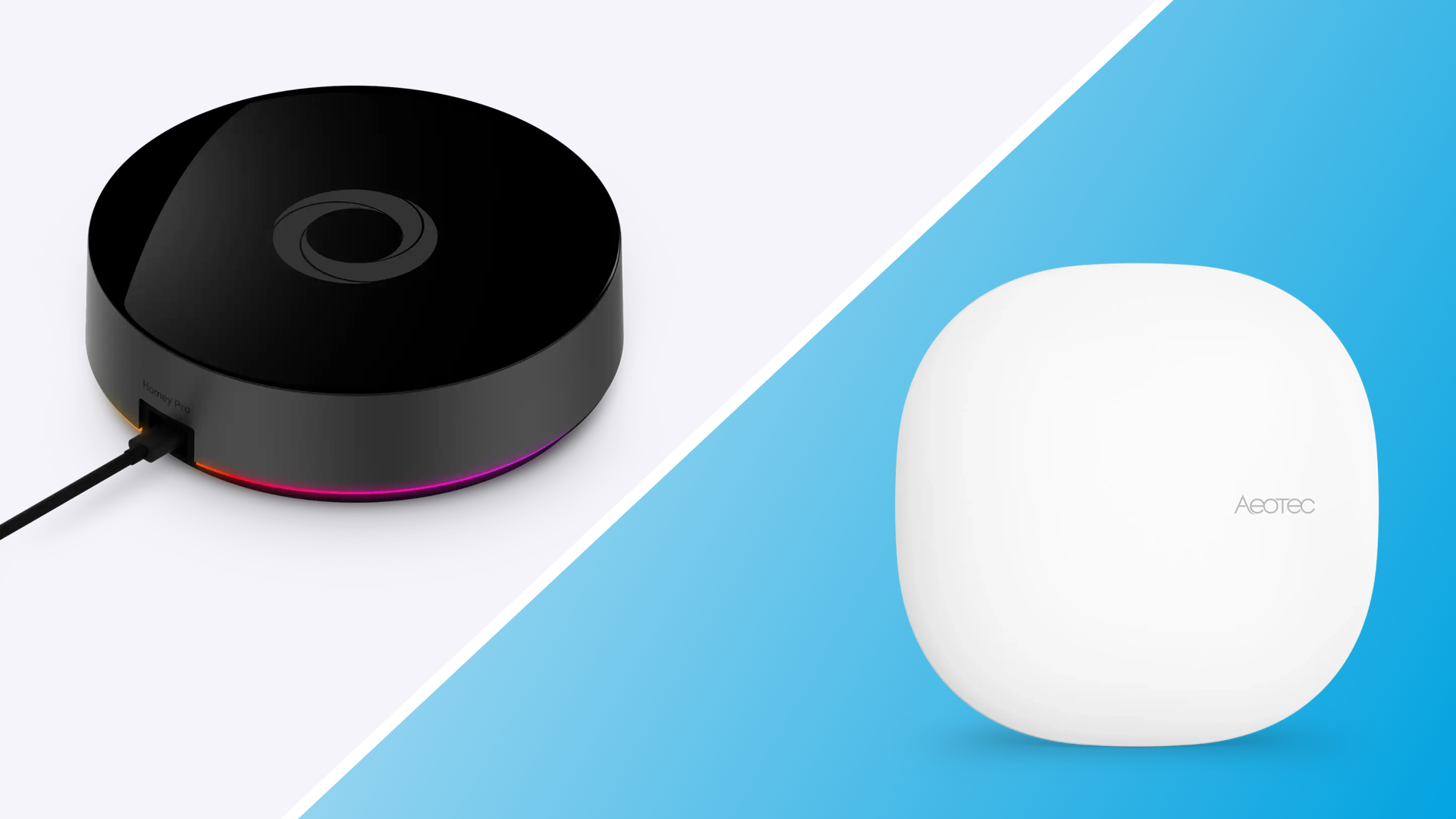
What You Should Consider
- Different Approaches
- Ease of use
- Device Control
- Device Compatibility
- Automation
- Security and Privacy
- Community and Support
- What About Costs
- Should I Choose Homey Pro or SmartThings?
Different Approaches
Homey Pro and SmartThings share the same goal of connecting your smart devices under one roof yet their approaches to home automation are different. In summary, Homey Pro is built as an independent all-in-one smart home hub that prioritizes compatibility, local processing, and freedom of choice. It works with thousands of devices across many brands and protocols, giving you complete flexibility in how you design your smart home. SmartThings, on the other hand, is closely tied to the Samsung ecosystem. While it supports third-party devices and has improved with Matter and Thread, it is still at its best when used alongside Samsung appliances and services.
Homey Pro — A Hub of Freedom and Integration
Homey Pro is designed as an all-in-one smart home hub that puts compatibility and local control at the center. It connects directly with devices across Matter, Thread, Zigbee, Z-Wave, Wi-Fi, Bluetooth, 433 MHz and Infrared. This gives you freedom to choose the devices you want without being restricted to a specific brand.
Homey Pro’s all-in-one approach emphasizes user empowerment—brand-specific ecosystems or complex setups do not limit you. Whether you’re a tech-savvy enthusiast or someone new to the smart home scene, the intuitive Homey app and broad compatibility make it easy to create a seamless, automated home environment.
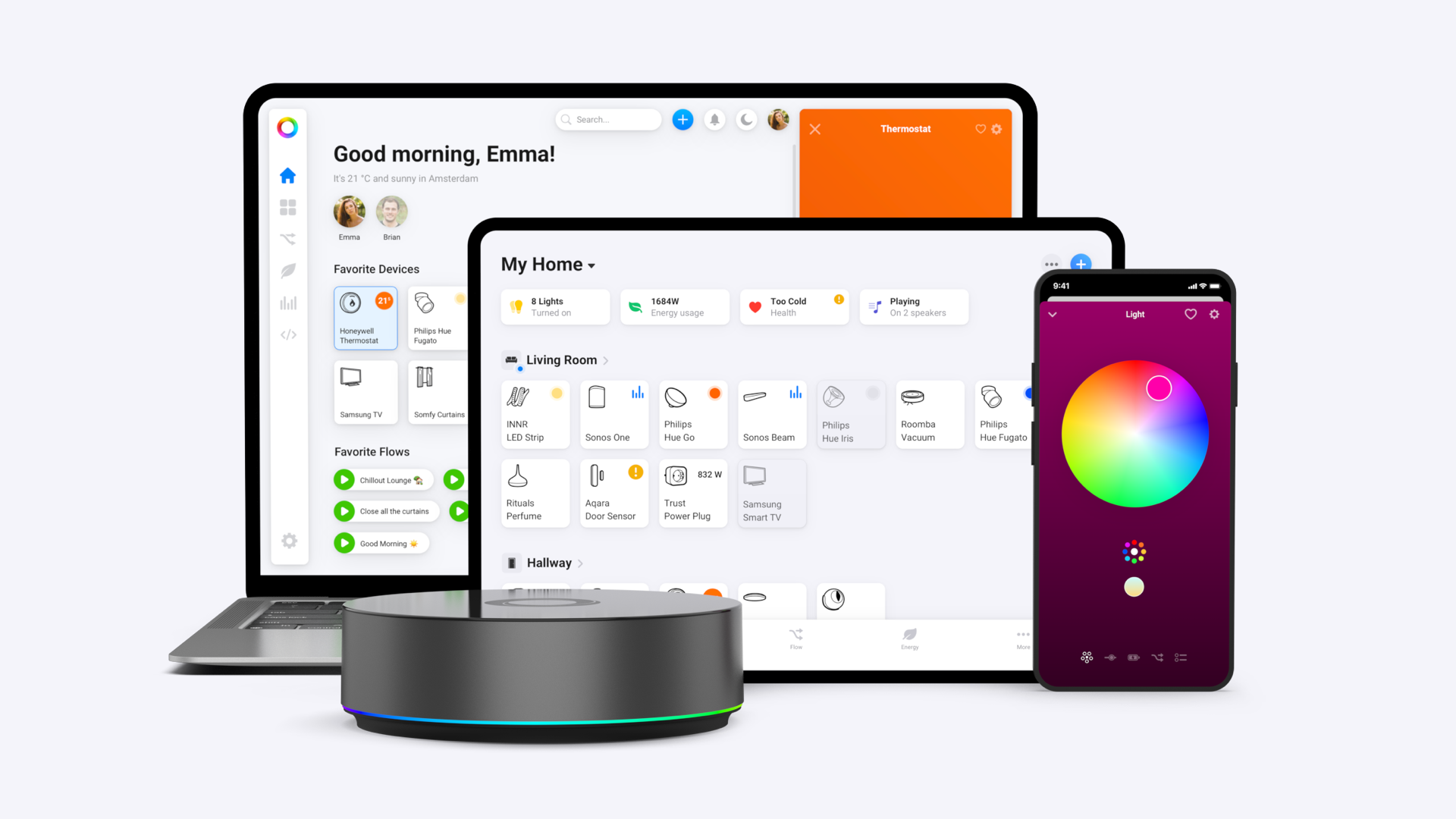
SmartThings — The Ecosystem Play
SmartThings is now offered mainly through the Aeotec Smart Home Hub or the newer SmartThings Station. The platform focuses on Samsung’s ecosystem of appliances, TVs, and Galaxy devices while also supporting third-party Zigbee, Z-Wave, Wi-Fi, and more recently Matter and Thread devices. This makes SmartThings particularly appealing if you are already invested in Samsung products but less flexible if you want to mix and match brands freely.
Ease of Use
Homey Pro is designed with simplicity in mind. The setup is straightforward and the Homey app provides a polished interface for adding devices, creating automations, and monitoring your smart home. New devices are discovered automatically and integrated seamlessly through their official apps. Therefore, Homey Pro is accessible to people with less technical knowledge who still want powerful home automation.
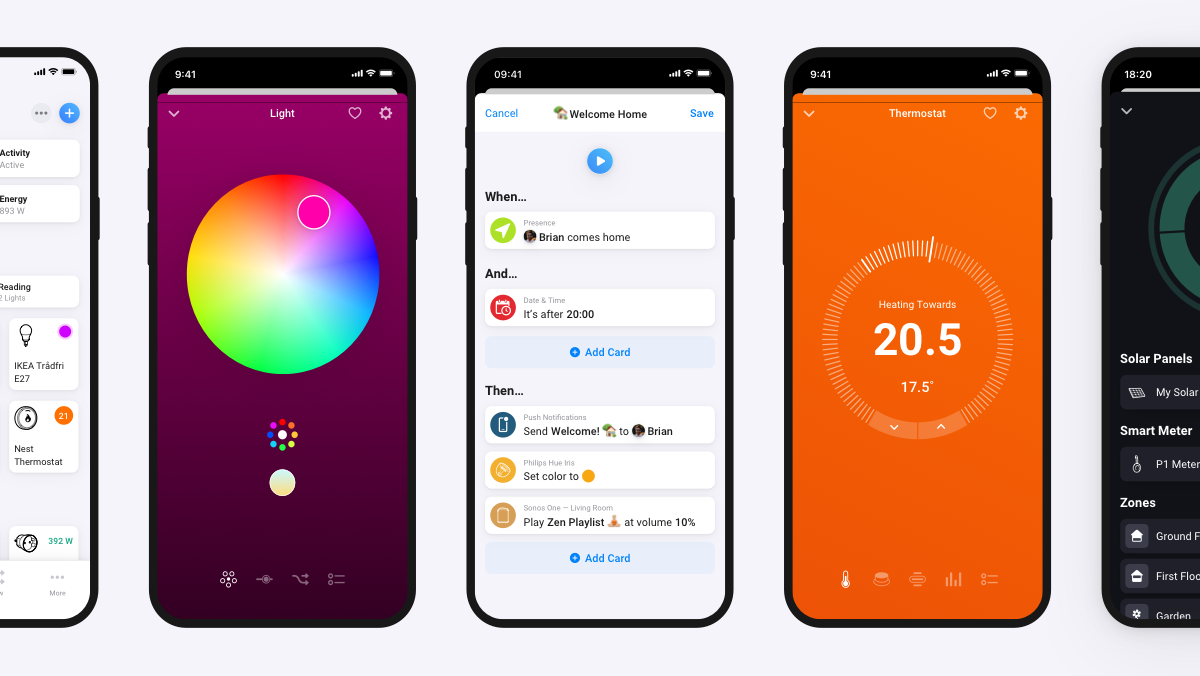
SmartThings also emphasizes simplicity and works best for users who want a quick setup. The SmartThings app makes it easy to add devices and create Routines for basic automation. If you use Samsung phones or appliances you will find the integration especially smooth. However, while SmartThings is beginner-friendly, advanced customization is limited compared to what Homey offers.
Device Control
Controlling devices is at the heart of every smart home hub. Homey Pro offers a clean dashboard that shows the status of all connected devices at a glance. The app is mobile-first and optimized for daily use, with intuitive sliders, buttons, and controls tailored to each device type. Whether you are dimming lights, adjusting your thermostat, or checking energy usage, the experience feels seamless and consistent. With Homey’s new dashboards feature, you can create personalized views that group your most important devices together, making it easy to monitor and control them at a glance.
SmartThings also provides an easy-to-use dashboard within its app. It works reliably for controlling lights, plugs, and appliances and integrates well with voice assistants like Alexa and Google Assistant. While it handles everyday controls well, it lacks the depth and flexibility of Homey’s device tiles which are designed to adapt to more complex setups.
Device Compatibility
Homey Pro is unmatched when it comes to compatibility. With built-in support for eight wireless technologies and more than 50,000 devices across countless brands, it works like a universal remote for your smart home. The Homey App Store expands this reach even further, offering apps from both community developers and official brands that ensure quick updates and reliable integration. As a result, Homey adds support for new devices at an inimitable pace. Apps are approved and then published in the Homey App Store. This way, everyone can enjoy it, even if you can’t code yourself.
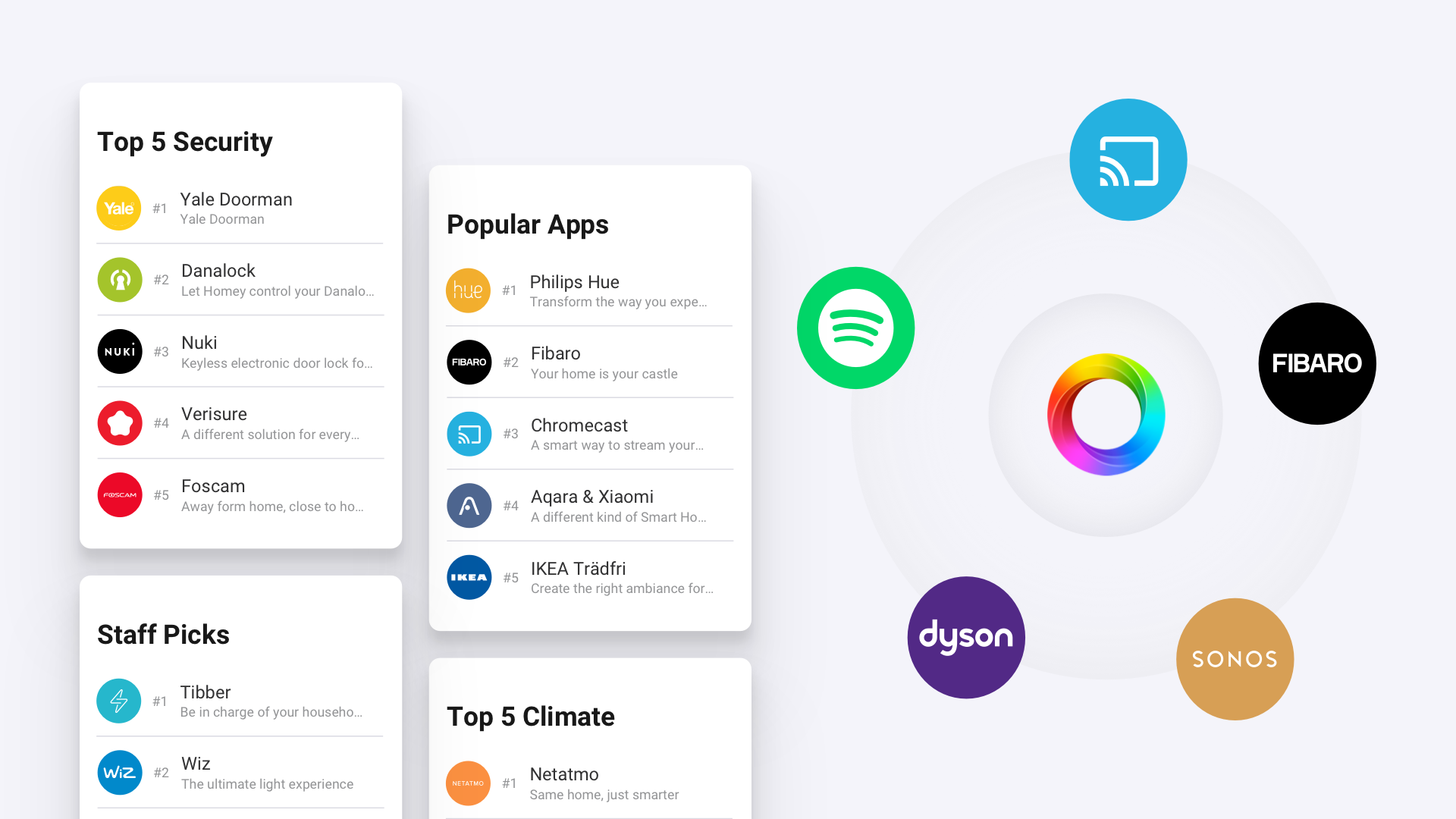
SmartThings supports a wide range of devices too, especially if they use Zigbee or Z-Wave. With Matter and Thread now added, compatibility has improved significantly. Still, the SmartThings ecosystem works best when paired with Samsung appliances and TVs, and some third-party devices rely on cloud connections rather than local control. This can introduce delays and reduce reliability compared to Homey’s local-first approach.
Automation
Automating your home is where the magic happens. It’s when your house can automatically switch on the lights, regulate the temperature, and even secure itself when you’re not around.
Homey Pro — A Playground for Tinkerers
Homey Pro handles simple home automation through its engaging Flow editor. Flows use a simple structure of When, And, and Then cards that allow you to build useful automations with little effort. Each new device you add brings its own set of Flow cards, so your options naturally grow as your smart home expands. Beyond simple triggers, you can also use cards from apps like weather or calendar services, giving you more ways to create meaningful automation that fits your daily routine.
For more advanced setups, Advanced Flow introduces a drag-and-drop editor that lets you design complex routines with clarity. The visual layout shows how every condition and action connects, while real-time feedback ensures your automation works as intended. This immediate insight makes it simple to refine and troubleshoot as you go. Together, Flow and Advanced Flow provide a dual approach that balances accessibility and power, making Homey Pro a platform that grows with you whether you are just starting out or looking to push home automation to its limits.
SmartThings — Easy and Effective
SmartThings approaches automation through its Routines and Scenes. Routines let you connect devices and actions using simple triggers such as time, location, or device state. Scenes allow you to control multiple devices with a single tap, making it easy to set up everyday situations like movie night or bedtime. The interface is straightforward and designed for quick results, which makes SmartThings a comfortable starting point for beginners who want to add convenience to their smart home without a steep learning curve.
For more complex needs, SmartThings can extend its automation through integrations with services like IFTTT. These open the door to connecting more devices and ecosystems, but add another level of dependency. Furthermore, some advanced automation features have been retired in recent years, offering fewer opportunities for fine-tuning compared to Homey Pro.
Security and Privacy
Another consideration is how comfortable you are with sending data to the cloud. Your home is your most private place—your smart home system should respect that.
Homey Pro — Keeping It Local
One of Homey Pro’s key strengths is its ability to process automations locally on the device instead of depending on cloud services. This ensures faster response times and more consistent performance, especially for essential automations that control lighting, heating, or security-related smart devices.
Local processing also reduces the risk of interruptions if your internet connection goes down. Just as important, it gives you greater peace of mind since your data is not constantly sent to external servers. With regular security updates and encrypted connections, Homey Pro is built with privacy and reliability at its core.
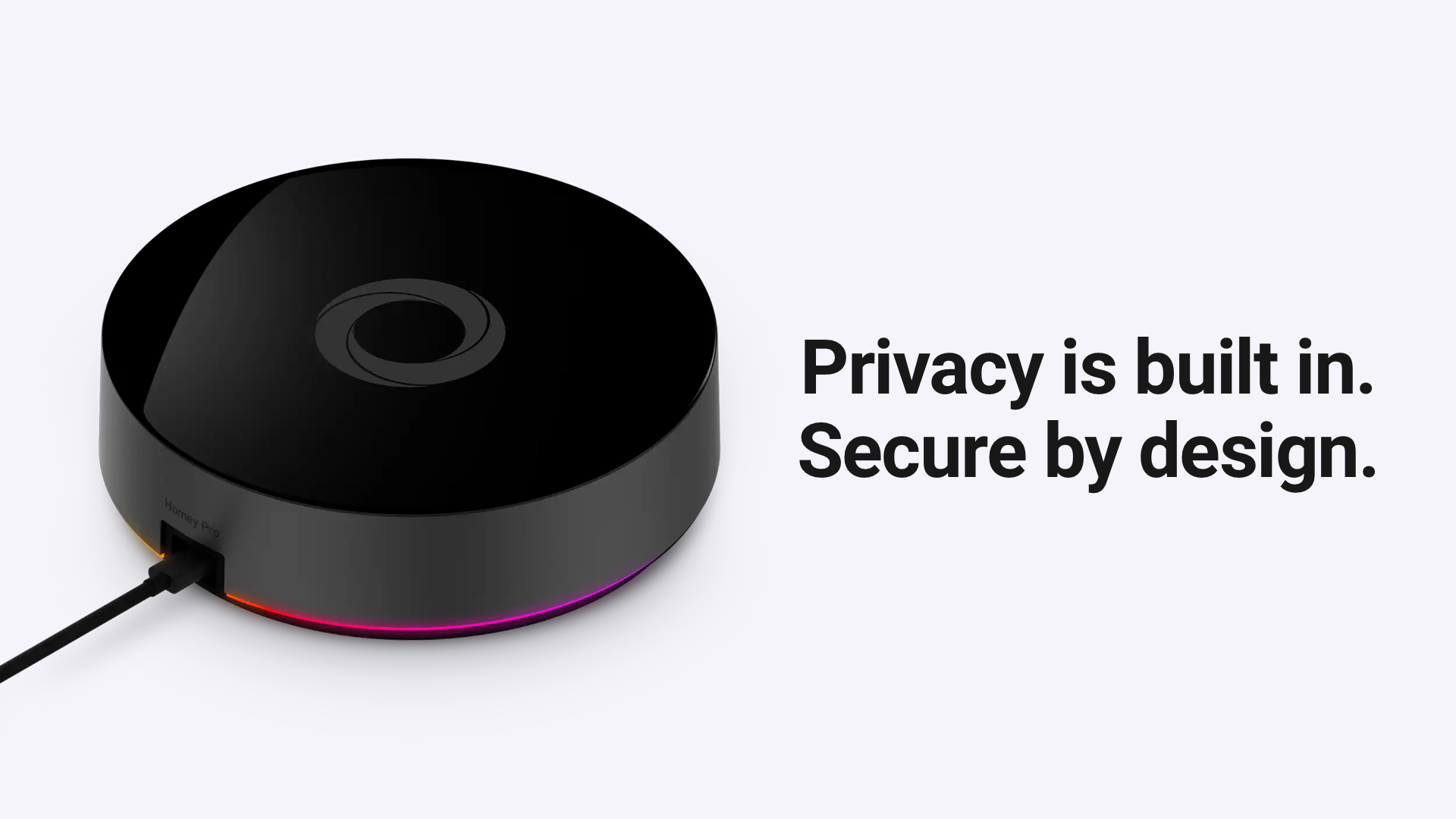
SmartThings — A Mix of Cloud and Local
SmartThings uses a combination of local and cloud processing. Many Zigbee and Z-Wave device controls now run locally, which improves speed and reliability compared to earlier versions of the platform. However, a significant portion of routines and third-party integrations still rely on Samsung’s cloud. This reliance can lead to delays or temporary outages if your internet is unstable.
Community and Support
Homey Pro users benefit from dedicated customer support, detailed documentation, and an active community forum. Whether you need help setting up devices, building automation, or troubleshooting, you can rely on both official and community resources. A support team is readily available to assist with troubleshooting, setup, and any other issues you might encounter. The platform also houses a rich Knowledge Base with official documentation and resources as well.
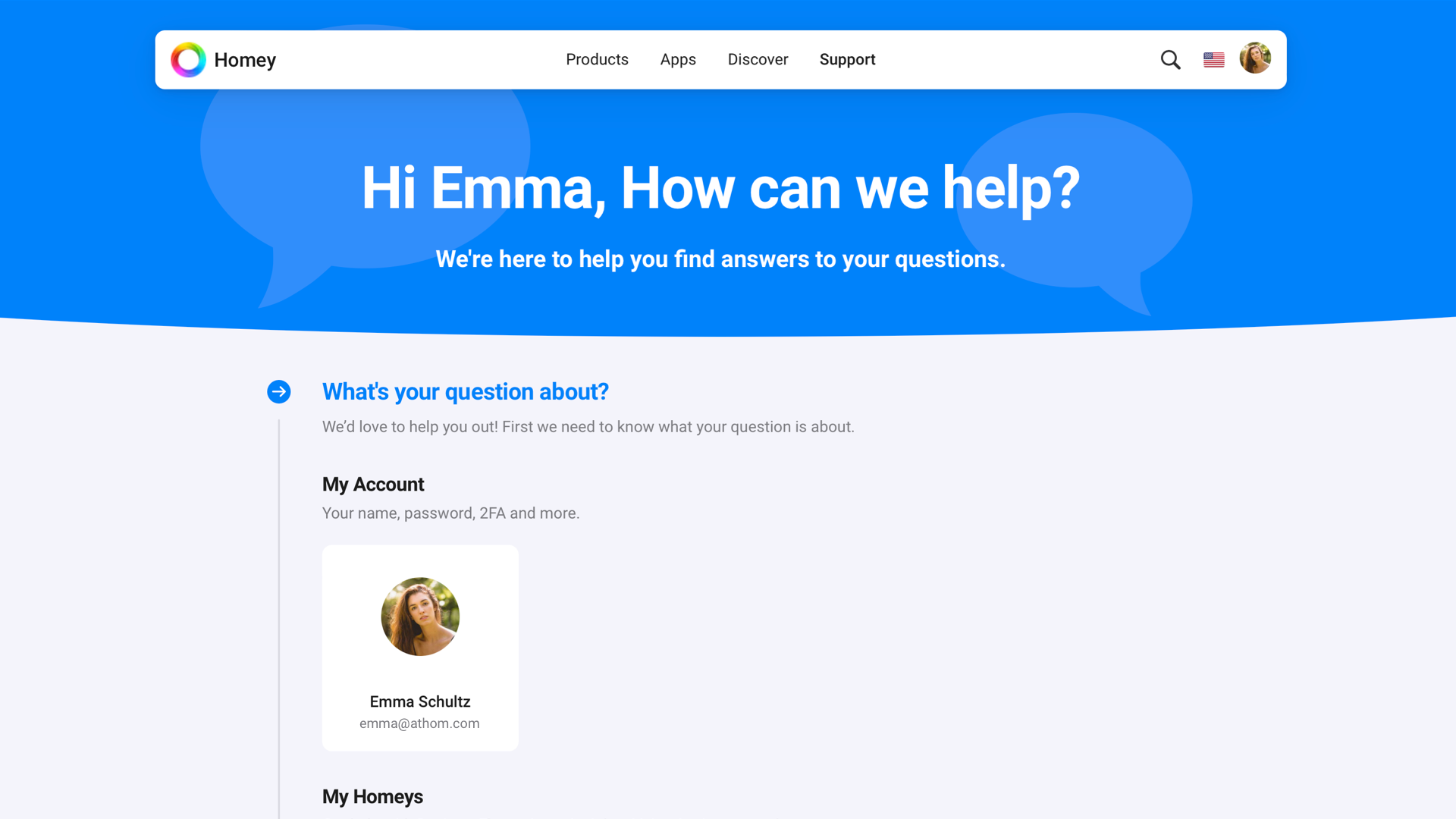
SmartThings provides support through Samsung and Aeotec. The platform has a large global user base but its community is less focused on customization since advanced development tools were retired. You can expect official help with setup and basic issues, though community-driven innovation is more limited compared to Homey.
What About Costs
Of course, cost is a factor to consider when deciding between Homey Pro and SmartThings. While both platforms offer extensive features and capabilities, their price points reflect the differences in their target audiences and the level of functionality they provide.
Homey Pro — A Premium All-in-One Solution
Homey Pro is a premium product that offers a comprehensive smart home hub that supports a wide range of devices and protocols. It’s available for a one-time purchase of €399. This price reflects the advanced hardware capabilities, including multiple built-in radios for Zigbee, Z-Wave, Wi-Fi, Bluetooth, and Infrared, and the local processing power that enables fast and reliable automation.
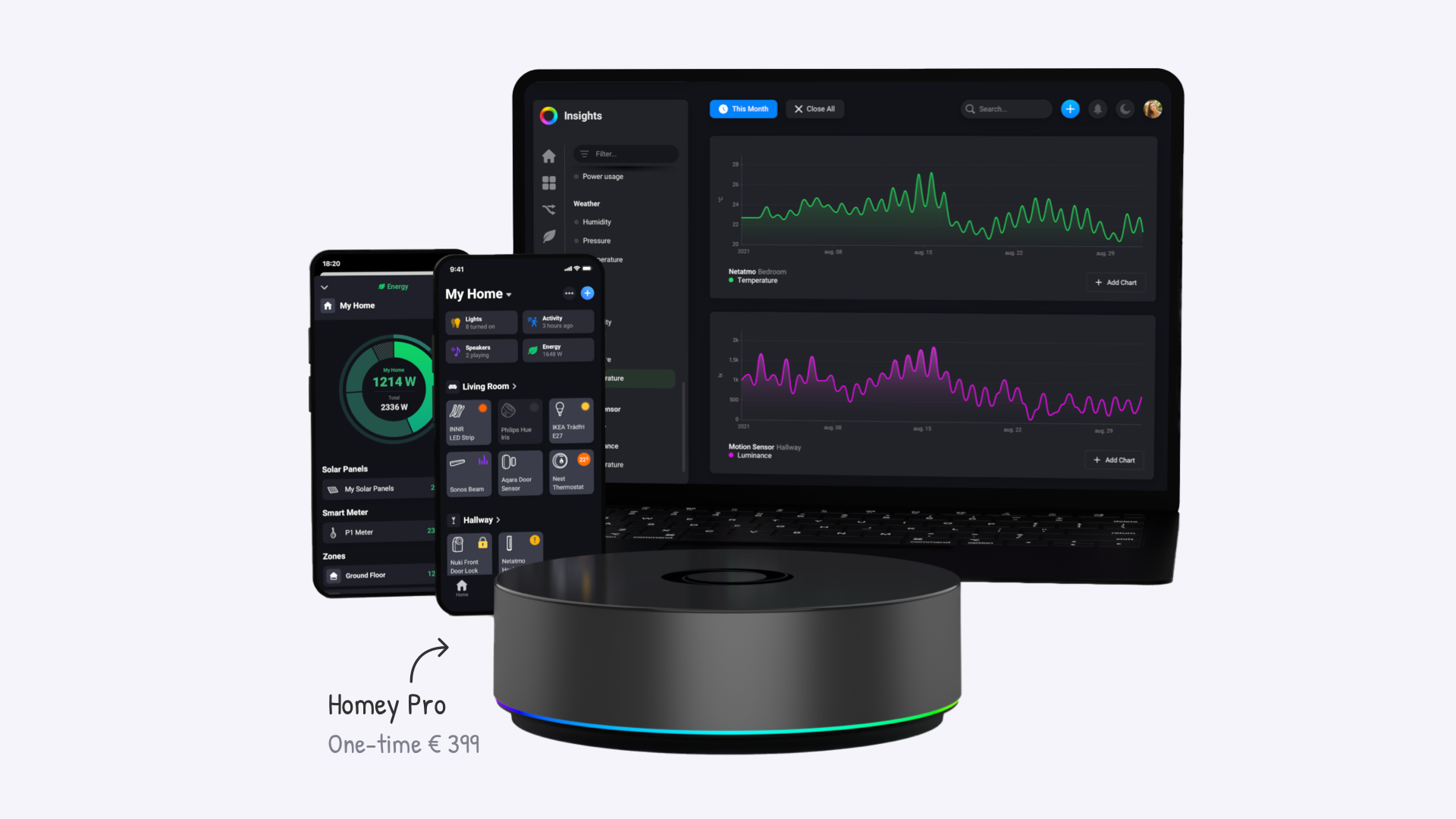
Additionally, Homey Pro’s app ecosystem and ability to integrate with many devices across different brands add to its value. For users who want a single, powerful hub that can handle almost any smart home device, the higher upfront cost of Homey Pro is often justified by its versatility and long-term convenience.
Aeotec SmartThings Hub — A Budget-Friendly Option
The Aeotec SmartThings Hub is more affordable, making it an attractive option for users looking to build a smart home on a budget. The Aeotec Smart Home Hub sells for around €100 while the newer SmartThings Station is closer to €80. This price point is significantly lower than Homey Pro, reflecting its focus on being an accessible entry point into the smart home world.
However, while the Aeotec SmartThings Hub is cost-effective, it’s important to note that it might require additional investments depending on the specific devices and features you want to incorporate. For instance, some advanced automation or third-party integrations may rely on extra services or require devices that are not natively supported, potentially leading to additional costs.
Total Cost of Ownership
Potential long-term expenses are also important when considering the total cost of ownership. While the initial investment is higher, Homey Pro’s wide compatibility and local processing means you save money over time by not needing additional hubs or cloud services. The robust app ecosystem offers what you need without ongoing subscription fees. The Aeotec SmartThings Hub is less expensive upfront. Still, depending on your needs, you may purchase additional hubs or rely on cloud services that could incur costs over time.
Should I Choose Homey Pro or SmartThings
If you want a versatile smart home hub that supports almost any device, runs automations locally, and provides both simplicity and advanced customization, Homey Pro is the clear choice. It is a privacy-aware, future-proof platform that grows with your needs.
SmartThings is appealing if you already own Samsung appliances and devices or want a low-cost entry into home automation. It makes simple routines and device control easy but is less flexible for power users.
Ultimately, your choice will depend on what you’re looking to achieve with your smart home. Whether you lean towards the freedom and customization of Homey Pro or the seamless integration of SmartThings, both platforms can help you create a more connected home.
Happy Automating!
Hopefully, this comparison has given you a better idea of what matters to you. There’s no right or wrong decision here—it’s all about what you prefer. No matter what you choose, have fun automating your home!






